Choosing The Best Documentary Video Camera for (under) $2500
Panasonic GH4 vs Canon XC10
By Guest Author: Matt James Smith
Date: Oct. 27, 2015
How does a documentary filmmaker figure out which camera to buy from the many great choices currently available? I'm a documentary filmmaker and founder of the video production company Lintelfilm (as well as being a self-professed camera geek).
I was challenged by Desktop Documentaries to recommend a great low-budget documentary camera in the $2500 range.
I personally own a Panasonic GH4 (which has become incredibly popular with low-budget video professionals in the eighteen-months since its release) but also feel that the more recently released Canon XC10 is a very strong contender in the same price-bracket.
In my attempt to find the best video camera for documentary filmmaking (below $2500), I first examine the landscape of available cameras, then hone in on the GH4 and XC10.
Two great cameras under $2500:
Is Now A Good Time To Buy A Camera?
If you’re looking for a video camera with professional features and image quality that will stand up to scrutiny for years to come, there are many great options out there at the moment.
Whether you like it or not 4K is here - and here to stay. Therefore if you’re in the market for a new camera it makes a lot of sense to future-proof your investment by jumping on that bandwagon early.
Those of you who read my previous article for Desktop Documentaries, 'A Cinematic Documentary Gear Package For (just over) $1000' will know that I think DSLR/hybrid form-factor still makes a lot of sense for documentary filmmakers. I think these compact, affordable cameras represent a great middle-ground between price, image quality, weight and size (i.e. discreteness).
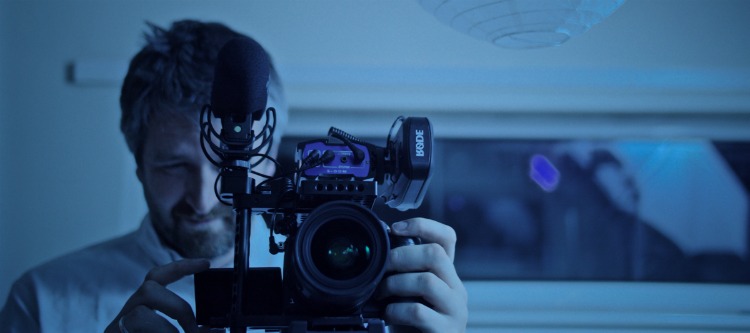
Matt James Smith (author) with his rigged-up Panasonic GH4
The limitations of shooting video on these “descendants of stills cameras” become less and less significant with every new release.
Indeed professional, video-oriented cameras from manufacturers such as Canon, Sony and Blackmagic have adopted many of the positive traits of the DSLR form into their designs - while the old “camcorder” style ergonomics become less and less common in the hands of filmmaking pros.
But I want my film to look more "Blockbuster" and less "Bargain Basement"! (Cameras for $5,000+)
We’re now at an interesting point in time where the gap between "low-end" or “consumer” video cameras and professional cinema cameras is closing exponentially.
For example, Canon seem to be positioning their new 4K shooting, $16,000 C300 Mark II (above) as a rival to RED's high-end Epic/Weapon cameras (currently starting around $40,000) and the Hollywood-standard Arri Alexa (up to as much as $100,000).
Meanwhile however, the 4K-shooting Sony FS5
and Blackmagic URSA Mini offer very similar specs to the C300 MkII for around
$5000 (that’s less than one-third the cost of the Canon)!
These are all ridiculously capable cinema cameras, meaning it gets harder every day for professionals to reconcile their minor differences in image quality and features, with the vast differences in price.
Caleb Pike (of DSLRvideoshooter.com) gives his thoughts on the upcoming Sony FS5 and A7SII.
Why are you telling me this? I'm not shooting Tree of Life Part II you know!
It’s all very well that it’s now possible to shoot a film with Oscar-worthy production value on a $5000 camera, but what if that amount isn’t within your means and/or you don’t require quite that cutting-edge level of performance?
What if your budget is a little more modest but you still want your footage to look professional and contemporary (and to do so for years to come)?
There are several options in the $1,500-$3,500 range that can offer both professional features and ‘future-proof’ image quality.
Many of these cheaper cameras shoot 4K and fall into the “DSLR form-factor” category (i.e. similar design and ergonomics to a professional stills camera), which as I said above can be a great advantage to documentary shooters.
Of course there are also traditional-format camcorders with excellent image quality that offer a similar level of discreteness, but I won’t be covering them here.
Camcorders with 1-inch (or larger) sensors are not common - especially in this price bracket.
Personally I find that image quality really begins to take a hit with anything smaller than a 1" sensor (which is, by the way, approximately the same size as Super-16mm film).
Even those camcorders that do have relatively large sensors don't seem to make much effort to avert a video-ish look to their footage.
The bottom line is that for me, they’re just not very exciting when it comes to capturing engaging images.
So you don't like camcorders - I get it! What do you suggest?
If we decide to rule out camcorders, that leaves us with two basic formats: the small interchangeable lens camera and the ‘bridge-style’ camera.
In the former group are offerings such as the Panasonic GH4, the Sony A7S, A7SII & A7RII, the Samsung NX1 and several of the cheaper Blackmagic cameras.
These tend to have larger sensors than the latter category which, while retaining the "stills camera" form factor, function more like traditional camcorders, having non-interchangeable zoom lenses and (relatively) smaller sensors.
Cameras in this group include the Panasonic FZ1000, the Sony RX10 Mark II and the Canon XC10.
The always-reliable TheCameraStoreTV with a review of the RX10II
(skip to 7min for the video part of the review).
OK that's quite a few cameras! Can you narrow it down a bit please?
Though the image quality of Blackmagic's cameras is wonderful, aside from the $5000 URSA Mini, they are almost universally unsuitable for anything even vaguely "run & gun".
This is also to some extent true of the Samsung, which exhibits rather severe rolling shutter (giving the dreaded "jello" effect to handheld images), uses a codec that many are not yet familiar with and offers a rather limited set of native lens options (thus also having limited image-stabilisation options).
Sony's recently released hybrid flagship - the A7RII - is an exceptionally capable 4K camera with a very full video (and indeed professional stills) feature set, including internal (sensor based) image stabilisation - even in video mode. However, once you add in the cost of the proprietary Sony XLR adapter or a good zoom lens, it enters more-or-less the same price bracket as the lower end pro cinema cameras.
In the "bridge camera" category, however, Sony offer
what is probably the most compelling option in terms of value for money. Their
RX10 Mark II (above) boasts a one-inch sensor, 4K image and a fast f/2.8
constant-aperture zoom. At $1300 it’s almost half the price of its nearest
rival in terms of features - the $2500 Canon XC10.
On paper, Canon’s 4K shooting “bridge-style” camera doesn’t offer a great deal more than the Sony - and indeed in some fairly significant ways (such as frame-rate and lens speed) it actually offers less. Therefore it may be somewhat controversial that I think the Canon is the better option. Why? For me it all boils down to the image.
Aside from the fact that the XC10 records at robust, broadcast approved bitrates (50mbps in HD & up to 305mbps in 4K) and to a professional colour space (4:2:2), Canon - as always - really know how to make an image sing.
The XC10 inherits the C-Log picture profile from their Cinema camera line, meaning colour science and dynamic range are very convincing selling points in themselves.
The Sony RX10 Mark II records 4K at only 100mbps and in a less appealing 4:2:0 colour space - and although it does have an S-Log picture profile, Sony’s colour science is not something I have ever personally found very exciting. Of course these things are somewhat subjective, and no doubt the RX10/2 offers huge value for money if you’re in the market for a self-contained video camera with a 1” sensor and your budget doesn't stretch to the XC10. In that situation it’s certainly a camera worth serious consideration - especially if you have a need for extreme slow motion (in which department it thoroughly trounces the XC10).
So you lean toward the GH4 and the XC10 as the "cream of the crop" in the $2500 price bracket?
Yes. I’ve chosen to compare one interchangeable-lens camera and one bridge-style camera. I believe these two formats - despite their differing advantages and disadvantages - represent the most compelling options in terms of affordability, form factor and ability to produce exciting images.
The Canon XC10 can be had for $2499 and is ready to shoot ‘out of the box’ (i.e. the lens is already attached, ND filters are built in, and one 64GB CFast card is included).
If you put together a package that makes the Panasonic GH4
comparably ready to shoot with - let’s say by adding the superb Lumix 12-35mm
f/2.8 stabilised zoom lens, a 58mm Tiffen Variable ND Filter, Panasonic’s new
‘V-Log L’ picture profile and a SanDisk
Extreme 64MB “Class 10” U3 SDXC card - that comes to a very similar
$2439.38.
Dave Dugdale (learningvideo.com) with an excellent -
and very long - GH4 review.
So you can take the lens off one and you can't the other. So what?
The XC10’s built-in zoom lens gives a “full frame” (i.e. 35mm) equivalent focal length of approximately 27-270mm in 4K video mode.
At the wide end the aperture can open to f/2.8, but as you zoom in toward the long end of the lens that maximum aperture drops to a rather disappointing f/5.6.
The Lumix 12-35mm on the other hand - though it has a much more limited focal range (in 4K mode the full-frame equivalent of about 29-84mm) - boasts a constant f/2.8 maximum aperture throughout.
If you prefer the Canon’s compromise of aperture size for focal length there is also the Lumix 14-140 f/3.5-5.6 to consider (which gives an impressive full frame equivalent focal range of approximately 33-336mm).
Of course one huge advantage of the GH4 is its ability to accommodate an almost unrivalled variety of lenses. This means that you could, for example, add the Lumix 35-100mm f/2.8 OIS to your 12-35mm if you find that you need more reach. Or perhaps a super-fast prime lens such as the Voightlander 25mm f/0.95. Or then again maybe a Metabones GH4 Speed Booster with a Sigma 18-35mm f/1.8 zoom - which would give you what is effectively an 18-35mm f/1.15 zoom lens (!!!) on a Super-35mm sized sensor (the film-industry standard)!
This makes the GH4 a hugely versatile camera, with the ability to achieve cinema-like shallow depth of field even at wide focal lengths and - if you desire - the option of adding lenses vastly longer than the maximum focal length of the XC10.
It should be noted however that the XC10 does boast one relevant feature here that the GH4 can never rival. In addition to optical lens stabilization, the Canon has in-body (sensor based) stabilization, which results in remarkably steady footage - even when shooting handheld and using the 2X crop feature at the longest end of the zoom (giving a 480mm full frame equivalent focal length)!
The ever-insightful Mattias Burling (Gunpowerder Video) offers 5 reasons
to choose the Canon XC10
It should also be noted that although the XC10 cannot realistically ever rival the GH4 for ability to create ‘cinematic’ shallow depth of field (due to its slow lens and smaller-than-GH4 sensor), the Canon’s sensor is vastly superior in low light to the Panasonic’s. Therefore the GH4 does not necessarily represent the better “low-light shooting” option simply because of it’s ability to take ‘faster’ lenses.
Suffice to say, if shallow depth-of-field and lens “character” are not important considerations for you (and traditionally they have not been for documentary shooters - 16mm and small sensor camcorders being the staples of factual filmmaking in the past) - the XC10 with it’s superb stabilization and effective 24mm (HD mode) to 480mm (with 2X crop) at its long end, and excellent low-light capability, will surely cover most scenarios.
Below I have put together a table comparing the GH4 and XC10’s ‘pros’ and ‘cons’ to help with deciding which may be the right camera for you.
Panasonic GH4 vs Canon XC10
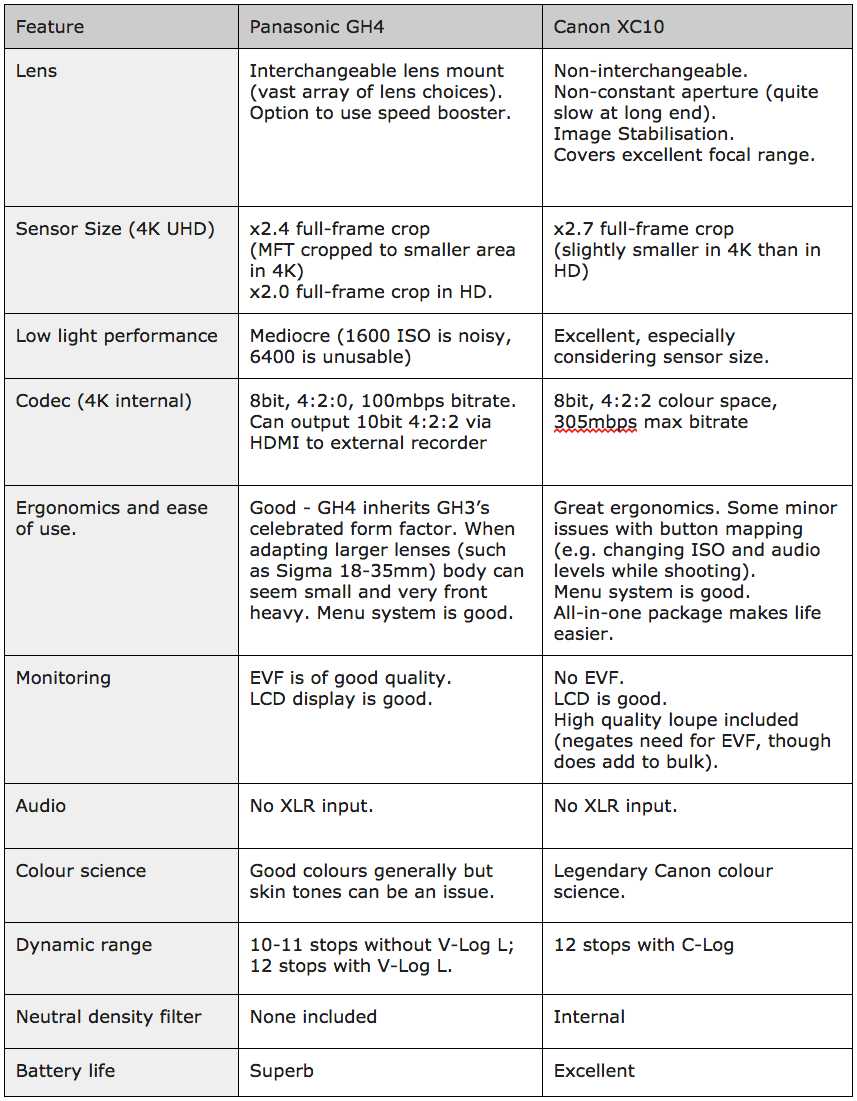
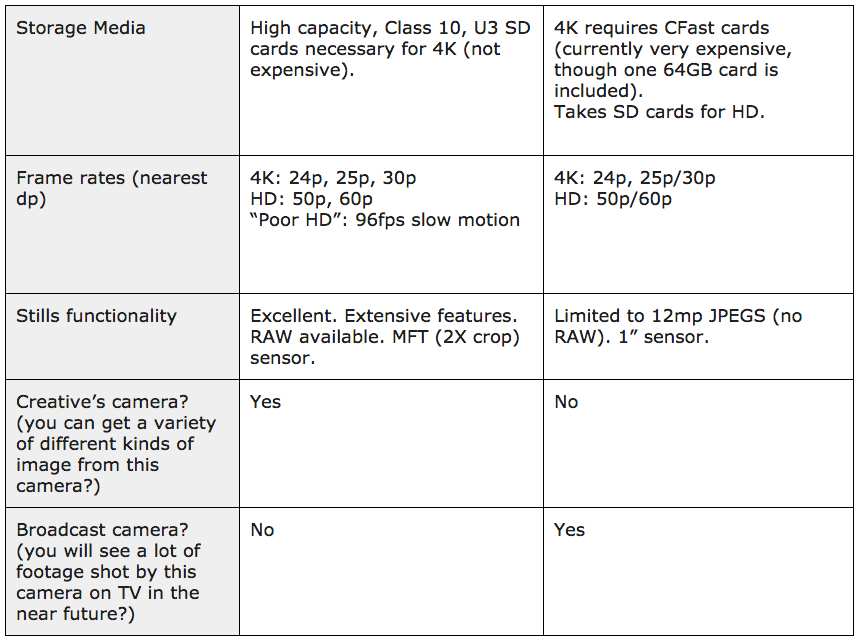
What About Audio?
Neither of these cameras have professional XLR inputs for balanced audio.
Personally I think that to some extent it negates their advantage of small size to add a chunky preamp box or external recorder and put heavy, long XLR shotguns on top of them.
With my GH4 I use the modestly sized Rode Videomic Pro and a Rodelink wireless lavalier system - both of which use a standard 3.5mm plug that goes straight into the camera - and both of which incorporate good, strong preamps that give the ability to boost their signal by 20dB. This means you don’t have to rely on the preamps inside the camera to get good audio.
To mount the two Rode devices to my camera I use a Beachtek MCC-2 audio adapter, which not only acts as a signal splitter allowing each (mono) Rode device to be sent to the separate channels of the camera's stereo input, but also provides a control knob for each channel so that you can attenuate and finesse audio levels if they get too “hot”.
Having an actual physical way of
doing this, rather than having to go into a camera’s menu, is something I find
invaluable. This setup (the two Rode mics and Beachtek adapter) really adds
“proper” audio functionality to video cameras that are lacking in that
department compared to professional camcorders, while bypassing the need for an
additional, external preamp or the dreaded “dual system” setup that doesn’t lend
itself to run and gun situations so well.
My GH4 Camera & Audio Set-Up:
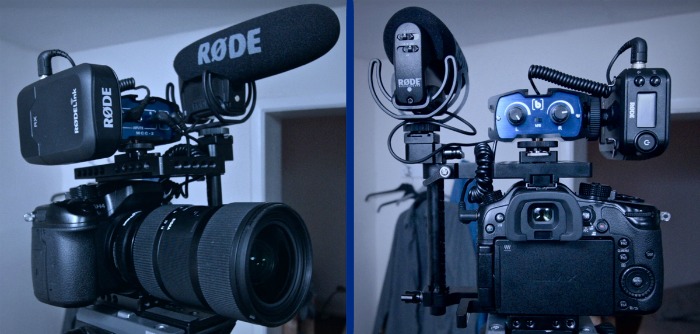
The Rode
VideoMic Pro-R, RodeLink wireless receiver and BeachTek MMC-2 adapter mounted
to a Panasonic GH4 using the excellent and very affordable SmallRig GH4 cage.
Narrowing It Down: Best Documentary Video Camera for (under) $2500
I own a GH4 and I love it (check out the top two videos on the Lintelfilm portfolio page, which were both shot with a combination of the GH4 and the Blackmagic Pocket Cinema Camera).
Panasonic have gone to great lengths to make it a fully functional video camera with professional features.
With the recent addition of the V-Log L firmware update, the GH4 continues to fulfill that promise and remains a very compelling choice in its price bracket. This combined with the fact that you can add an external recorder (such as the diminutive Atomos Ninja Star, the very affordable Blackmagic Video Assist, or the 4K-compatible Ninja Assassin) to get 10-bit 4:2:2 ProRes image files - features frankly unheard of in the hybrid camera market - makes it a seriously powerful cinema camera.
Add to this the fact you can adapt almost any lens to it (plus the option of adding a Speed Booster if the sensor size is not “cinematic” enough for you), can shoot 4K and HD up to 96 frames per second, is a very impressive stills camera in its own right (great for timelapses too) and you have what has to be one of the most versatile cameras in the world, in a small package at a great price.
The only major weakness of the GH4 is that it is at best mediocre in low light, and compared to most of its recently released rivals from Sony, Nikon and Canon it lags seriously behind in this regard.
For documentary shooters this may be a genuine stumbling block for the GH4. Narrative filmmakers have the option of controlling lighting, whereas documentarians are not always so privileged.
There are numerous cameras available now that have extraordinary low light capabilities (in particular the Sony A7S, A7SII and A7RII), meaning that if you need to you can avoid the problem of noisy footage pretty much altogether.
If you think you will be shooting a lot in poor lighting conditions, the GH4 may not be the best choice.
The Canon XC10 on the other hand performs surprisingly well in this regard - especially considering it only has a 1” sensor. This is the big appeal of the XC10 - it just works. It's a hugely reliable camera that simply doesn't have any major weaknesses. The size of its sensor means that "cinematic" shallow depth of field is somewhat off the table, but that is not necessarily a negative for documentary work.
Besides, in many other ways the image is cinematic - arguably more so than the GH4 - dynamic range is a solid 12 stops, colour science is superb and the beefy codec means the image looks organic rather than digital (as well as allowing for extensive colour grading without falling apart).
Another video
from Mattias Burling, shot entirely handheld
on the Canon XC10
And The Winner Is?
As I say I'm the proud owner of a GH4 and I'm very content with it.
I'm from an arts background so I like the vast array of creative options that the Panasonic hybrid offers - and I'm an unabashed camera geek so I can mess around with those options until the cows come home.
However, I'm also a professional video producer and the truth is that 50% of the time, most of those options just get in the way and make my job harder.
So what is the best documentary video camera in the $2500 range?
I have to say that if I was buying a camera to shoot a documentary that involved any run and gun type work, I would almost certainly go with the Canon XC10. It has a beautiful, non-video-like image, a versatile lens (the slowness of which is offset by the great low light performance of the sensor) with great focal range and superb image stabilisation.
Canon XC10
It's a camera you can rely on to get the shot and know the resulting images will be stunning. It requires the barest minimum of faffing with to begin shooting, and is small and discreet enough to not draw attention to itself.
If you don't need feature-film-like shallow depth of field but rather lean toward the journalistic side of documentary filmmaking - while still caring about how your film looks - I think the XC10 is the winning choice.
Unless you desperately need onboard XLR inputs, I can't see any compelling reason to shoot with a camcorder ever again.
Well done Canon, once again you’ve released a camera that on paper appears seriously underwhelming, but when put to use in the real world confounds all expectations and delivers superb results.
About The Author

Matt James Smith is a short-form documentary filmmaker and founder of Lintelfilm, a video production company in Durham, North East England. Matt holds a PhD in Lens-based Media from Newcastle University in the UK. He decided he wanted to be a filmmaker after watching an interview with David Lynch on TV in the late 1990’s. Like his teenage hero he took the unconventional route of pursuing his interest in cinema via art school. There he obtained a First Class degree and an MFA before going on to complete his doctoral research. Matt lives in England with his wife and their 3-year-old son. Learn more: Lintelfilm.uk
Disclaimer: This article represents my opinion only. I strongly believe that cameras cannot be judged on specifications alone and that many of the things making one camera “better” than another are largely subjective. Therefore personal preference unavoidably enters the equation. Please do not make any purchasing decisions on my advice alone.
Please leave a comment below to let Matt know your thoughts about his article.
Other Articles You May Enjoy
- Cinematic Documentary Camera Gear Package for (just over) $1,000
- Making Documentaries: What Camera Should I Buy?
- Secrets of Cinematography: 10 Elements of A High Quality Image
- Documentary Film Camera Kit(s)
Ready To Make Your Dream Documentary?
Sign up for our exclusive 7-day crash course and learn step-by-step how to make a documentary from idea to completed movie!
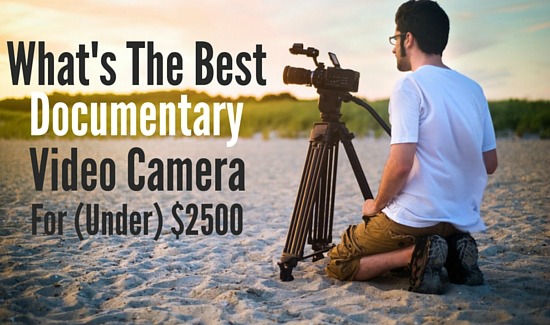
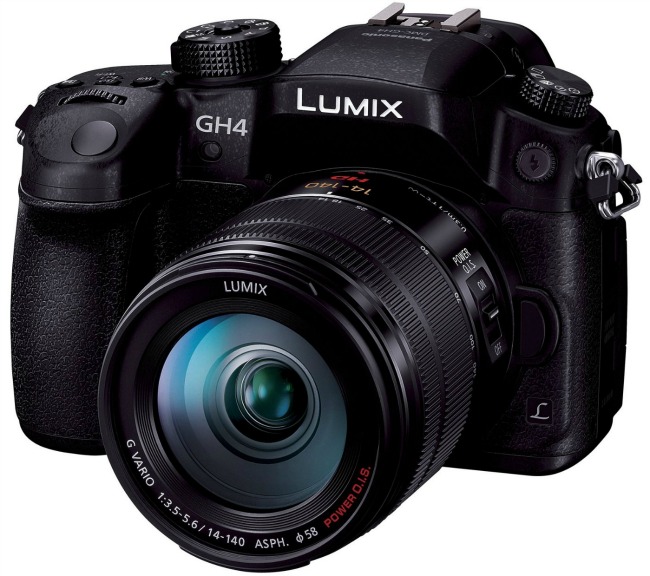
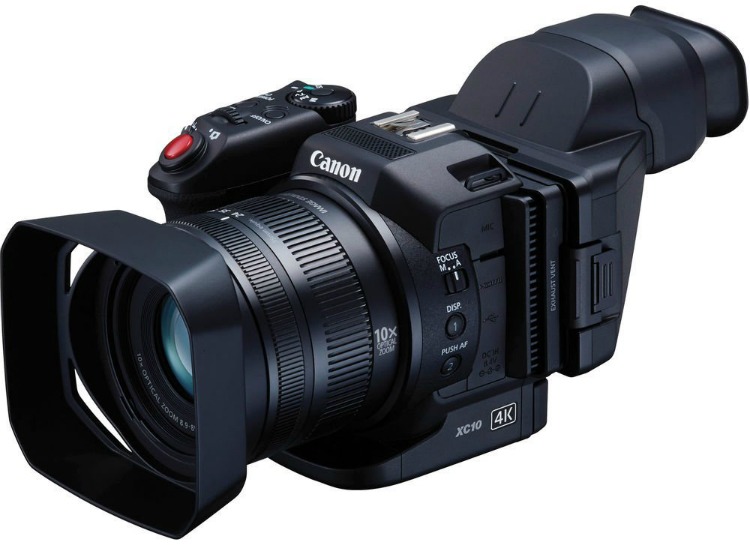

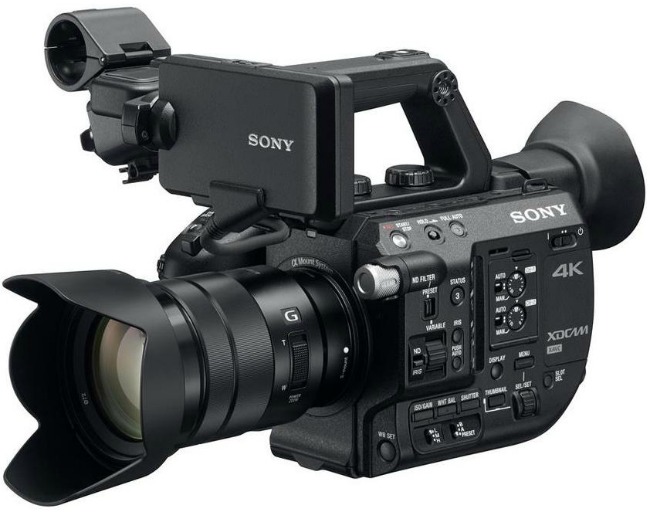
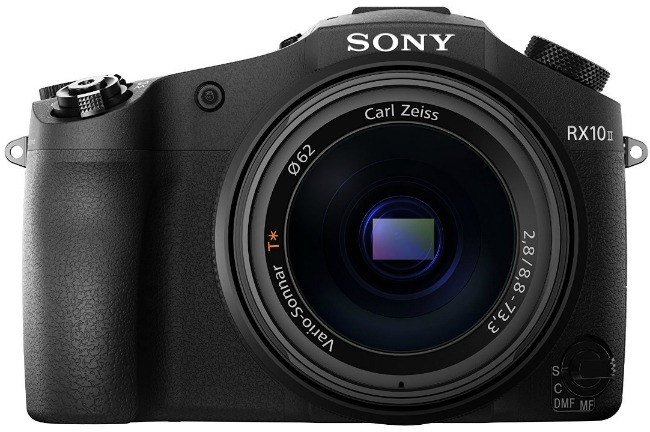
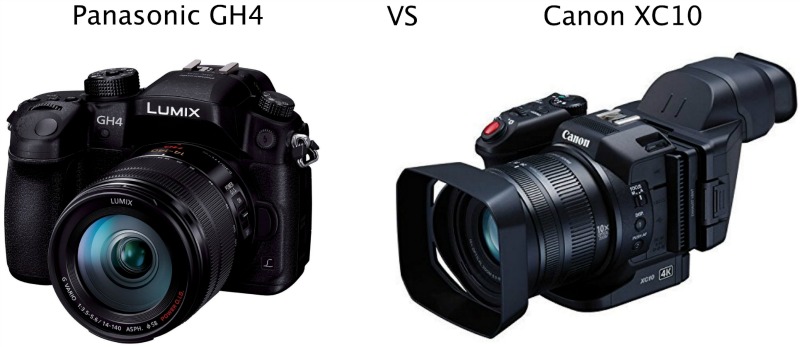








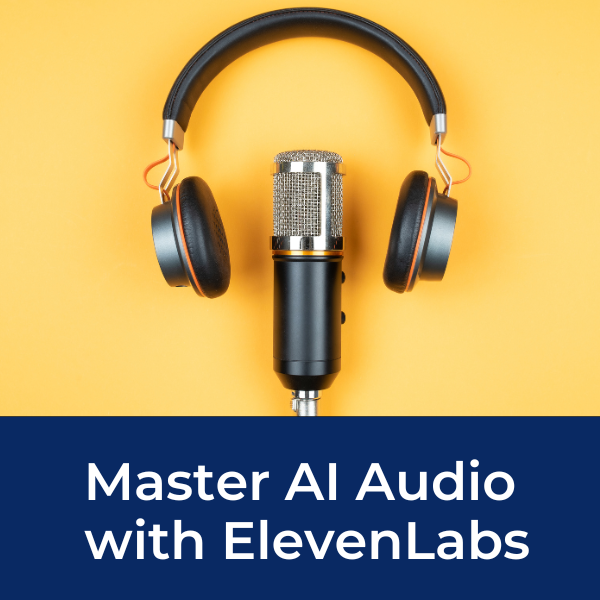



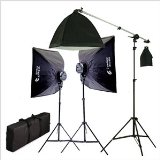
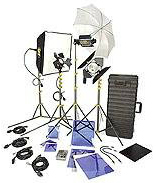
New! Comments
[To ensure your comment gets posted, please avoid using external links/URL's]